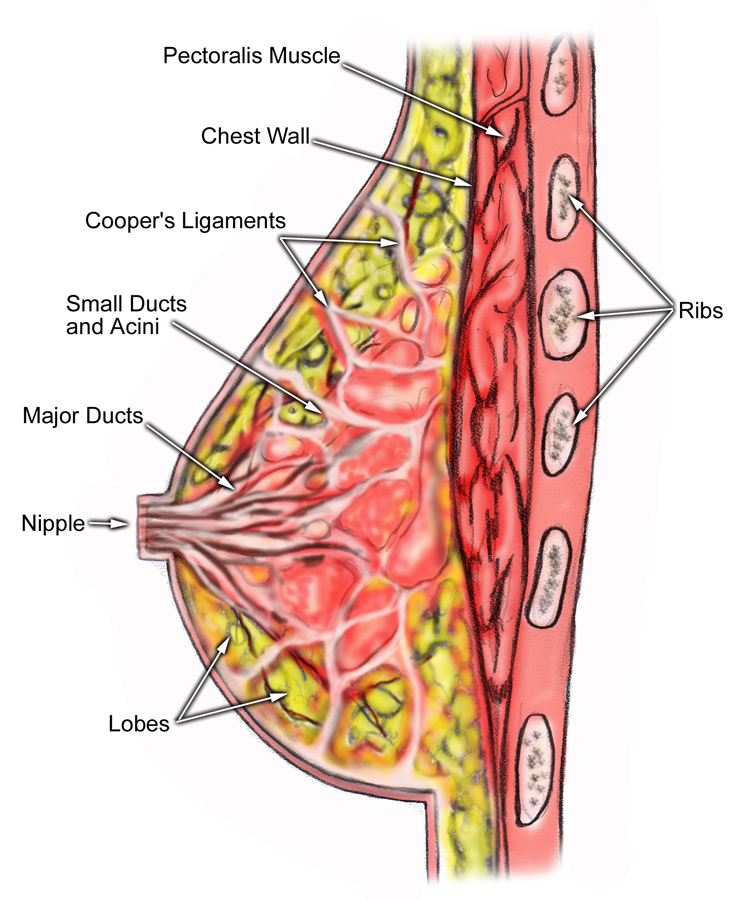Image to the left taken from emedicine.medscape.com.
Breasts are milk-producing (mammary) glands surrounded by fat and are attached to the front of the chest by ligaments. The breast rests on the pectoralis major chest muscle, but has no muscle tissue itself. The fat in the breasts determines their shape and size, which varies among women even though the size of the mammary gland system is relatively standard. In addition, women commonly have one breast that is larger than the other.
Breasts begin developing between the ages of 9 and 14 for most girls, and signal the start of puberty. Breast tissue is highly sensitive to the hormones estrogen, progesterone, and prolactin throughout the menstrual cycle. While breastfeeding, prolactin triggers milk production within the breast, and its anatomy is simple yet complex.
Lobules, Alveoli, and Ducts
Breasts have 15 to 20 sections known as lobes or lobules that converge at the nipple. Each lobule consists of hollow sacs called alveoli, and the lobules are connected through ducts. The final collection area for milk is known as the main duct.
During breastfeeding, prolactin stimulates the alveoli to pull nutrients from the woman’s blood to produce breast milk, and oxytocin causes the alveoli to release the milk through the mammary ducts to the nipple.
Nipple
Also known as the mammary papilla, the nipple is the outlet for the mammary ducts and where milk is secreted.
Areola
Often included when referring to the nipple, the areola is the round pigmented area surrounding the nipple. During breastfeeding, small bumps on the areola known as Montgomery glands produce an oily substance that cleans and lubricates the nipple.
Lymph Nodes and Ducts
The lymphatic system helps fight infection by capturing and excreting pathogens and toxins through lymph nodes and ducts. These nodes are found near the breast, in the armpit, and behind the breastbone. Often, axillary (armpit) lymph nodes are removed during mastectomy.
Cooper’s Ligament
This ligament is often called “nature’s bra” because it lifts the breast and prevents it from sagging.
For a slideshow on breast anatomy, visit http://www.mayoclinic.com/health/breast-cancer-early-stage/BC00001.
Have questions about breast cancer? Visit our blog’s Ask the Doctor section.






